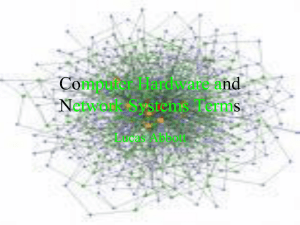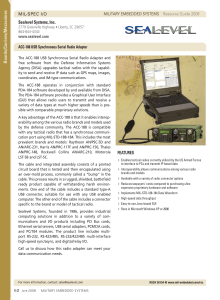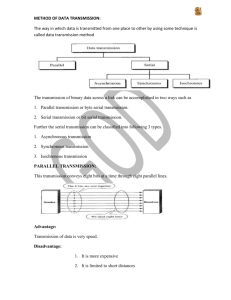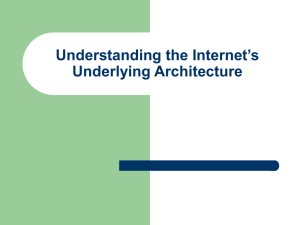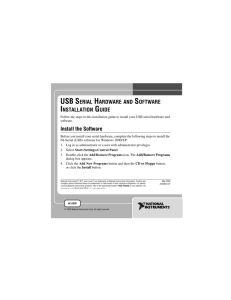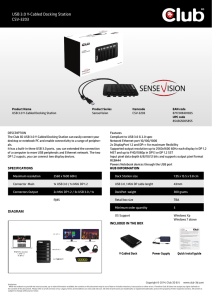Data Exchange - GEOCITIES.ws
advertisement
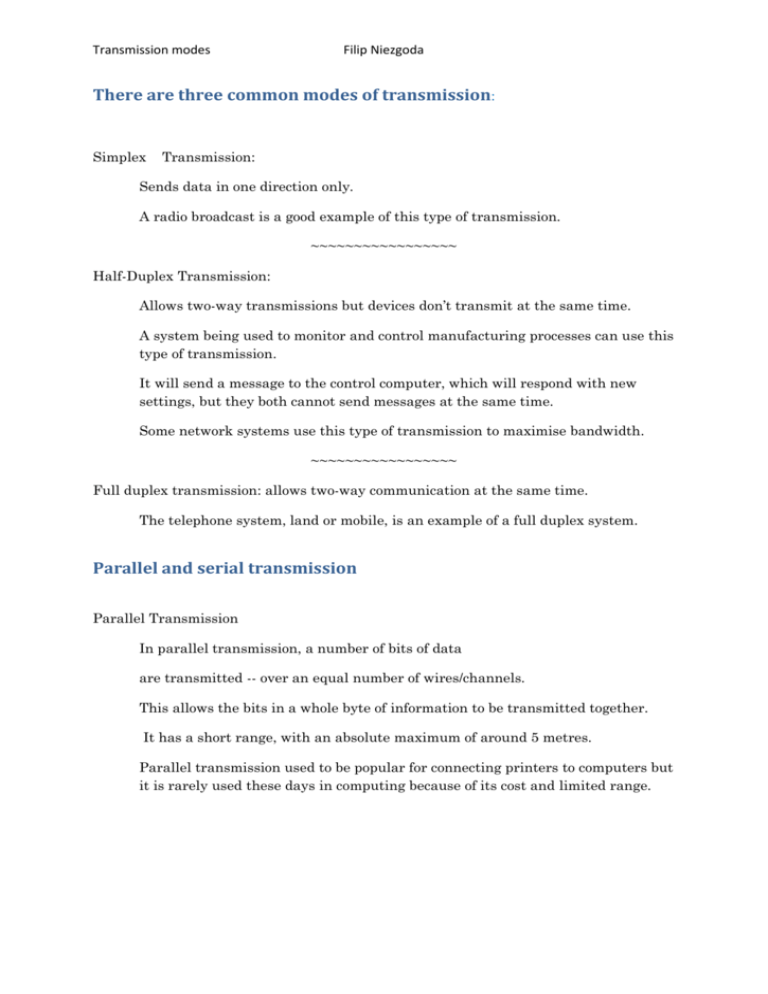
Transmission modes Filip Niezgoda There are three common modes of transmission: Simplex Transmission: Sends data in one direction only. A radio broadcast is a good example of this type of transmission. ~~~~~~~~~~~~~~~~~ Half-Duplex Transmission: Allows two-way transmissions but devices don’t transmit at the same time. A system being used to monitor and control manufacturing processes can use this type of transmission. It will send a message to the control computer, which will respond with new settings, but they both cannot send messages at the same time. Some network systems use this type of transmission to maximise bandwidth. ~~~~~~~~~~~~~~~~~ Full duplex transmission: allows two-way communication at the same time. The telephone system, land or mobile, is an example of a full duplex system. Parallel and serial transmission Parallel Transmission In parallel transmission, a number of bits of data are transmitted -- over an equal number of wires/channels. This allows the bits in a whole byte of information to be transmitted together. It has a short range, with an absolute maximum of around 5 metres. Parallel transmission used to be popular for connecting printers to computers but it is rarely used these days in computing because of its cost and limited range. Transmission modes Filip Niezgoda Serial Transmission In serial transmission, bits are transmitted one at a time over a single wire/channel. This reduces the cost of the cable, but gives a slower rate of data transfer. There is also some additional complexity, as bytes have to be disassembled into individual bits for transmission and then reassembled after receipt. This is called Packet Switching Serial transmissions can be used over large distances. Packet Switching When a data file is being sent it is split into a number of packets. Each packet contains a section of the data plus 3 other items Destination IP Address Origin IP Address Data Place in the file (order number) Explain how these packets get from the origin to the destination The packets go through different routers in different directions and places (whichever has the lowest traffic) but all get to the same final destination and arrive in a different order to what they originally were. When the packets get to the Destination IP Address, why is Place in the file (order number) needed? Because the separated packets arrive at the final destination at different times they are in a different order so the order number is needed so the packets can be put back together into the original file. Transmission modes Filip Niezgoda Universal Serial Bus (USB) Universal Serial Bus (USB) is a serial transmission method which was introduced to make many of the connections to a computer look the same. Nowadays USB is used in a wide variety of devices, such as 1 Tablets 2 Desktops 3 TVs 4. Phones USB ports also supply power to some devices. The maximum theoretical transmission rate for USB 2.0 is 480 Mbps, but this is shared among all devices on a USB hub, so the rate for each device will be less than this.

